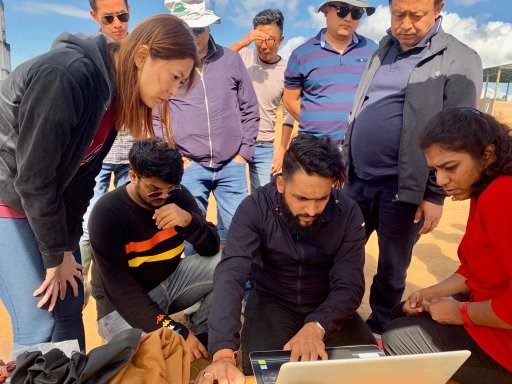In this DRONELIFE Exclusive: What if we consider drones as community entities and assets, rather than just robots flying in the sky delivering goods and services?
DRONELIFE is honored to publish this guest post by Salima Bhimani, Alphabet’s first Chief Strategist and Director for Inclusive Technology, Business, and Leaders from 2017. DRONELIFE neither accepts nor makes payment for guest posts.
Re-imagined Lives: Drones as Community Assets
by Salima Bhimani
Do you recall the film “Jaws”? I watched the first one in the 1980s. After watching it I couldn’t get into the ocean without dread of what was lurking beneath the surface. But it wasn’t until about 7 years ago that I began watching videos from TheMalibuArtist, who captures the everyday life of sharks using drones. My terror transformed into curiosity and admiration for these incredible animals that call Southern California home. As an aerial custodian of sharks, The Malibu Artist captures data about sharks that has literally changed my feelings about the ocean. So it wasn’t the drone flying above us during a family picnic that initially piqued my interest in the potential of drone technology; instead, it was sharks. I didn’t know it then but I’d end up working with Wing, a subsidiary of Alphabet, one of the world’s leading drone companies in my role as the Chief Strategist and Director of Inclusive Technology, Business, and Leaders at Alphabet (Google).
As fascinating as sharks are, what’s even more compelling to me are the examples of drone use that are creating opportunities to access resources, knowledge and skills that are literally changing the direction and opportunities of people’s lives. Consider this real scenario: a woman in a remote village, surrounded by harsh terrains, is about to deliver a baby and faces complications. Medical devices and medicines are hours away. In this critical moment, a drone flies over these obstacles, delivering life-saving supplies immediately. Having had a baby myself a few years ago, I can’t imagine the stress for a mom facing harsh physical and medical barriers. This is the power of drone technology. Zipline, a drone company that operates in North America, Africa and Asia, was able to reduce maternal deaths by 51% due to postpartum hemorrhaging in hospitals by enhancing their blood management systems through drone delivery of blood in Rwanda.
As someone who works on and helps leaders and tech companies build inclusive and responsible innovation and technology, I am finding myself thinking more about drones as community entities and assets, rather than just robots flying in the sky delivering goods and services. And if what I am feeling has any truth in it, then it’s even more important to consider how drone technology can and should be designed, deployed and have impact through a responsible tech and AI lens. There are many definitions of responsible AI and tech these days, but here is one I propose for our purposes:
Technology designed and deployed with people, communities and contexts, enhancing life outcomes through knowledge, opportunity and resources, once unattainable.
Growing drone tech footprint
The aerial innovation industry is anticipated to skyrocket, reaching a valuation of $50 billion by 2030. A significant contributor to this growth is the commercial drone sector, projected to hit $127 billion by next year (2025), creating solutions to problems that might have not otherwise been possible. Given the expansion of the industry and the plethora of solutions drones can unlock to critical problems for people all around the world, it will be even more paramount that the drone industry continues to hone its skills in responsible AI and innovation.

